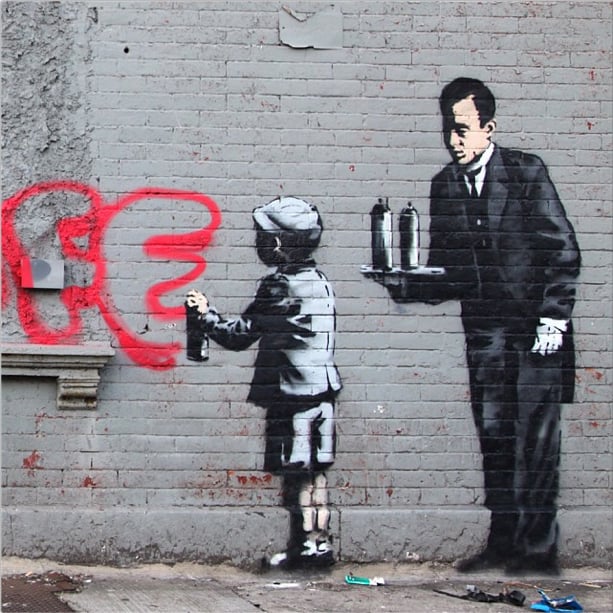People
Once-Controversial Banksy Street Art Will Be Rescued as Bronx Building Is Torn Down
The mural is one of just two surviving from the artist's "Better Out Than In" New York residency from a decade ago.

The mural is one of just two surviving from the artist's "Better Out Than In" New York residency from a decade ago.

Max Berlinger

Ten years ago, the mysterious British street artist Banksy took New Yorkers on a wild ride with his “Better Out Than In” series, in which, every day for a month, he revealed a new work in an undisclosed location somewhere in the city’s five boroughs. Almost all those works have disappeared, and one of the last two remaining will be saved from the wrecking ball.
That work is Ghetto 4 Life, located at 651 Elton Ave. in the South Bronx, in which a young, posh-looking boy is portrayed spray painting the piece’s title on a gritty gray wall as his butler looks on, offering spray paint cans on a tray. Both the building’s owner, David Damaghi, and the demolition engineer tell the New York Daily News that the work will be preserved, though the building is scheduled for demolition to make way for a charter school.
Beyond that, its future is unclear. “We want to remove it, take it away and store it,” Damaghi tells the paper. Whether it goes to a museum, a gallery, or a private buyer is not yet decided.
Like much of Banksy’s work, this piece caused a bit of an uproar. When it debuted in 2013, Bronx residents were unhappy with it, saying the term “ghetto” was a gross stereotype of the area. Then-Mayor Michael Bloomberg and then-Borough President Ruben Diaz Jr. both expressed displeasure with the project, but the police did not actively search out the artist on any legal charges.
Damaghi was wise to protect the piece behind a gate and plexiglass because, today, almost all of the works made public for the project are now gone. The only other one remaining is the so-called “Zabar Banksy,” outside the Upper West Side grocery store, the Daily News points out.
At least according to locals speaking to the paper recently, it seems that opinion about the piece has softened. “It’s a really good memory,” resident Marcus Velasquez told the Daily News. “It’s a history about the times. There’s a lot of history in the Bronx that, when you look at it, I think we should conserve it or something for the new generations.”